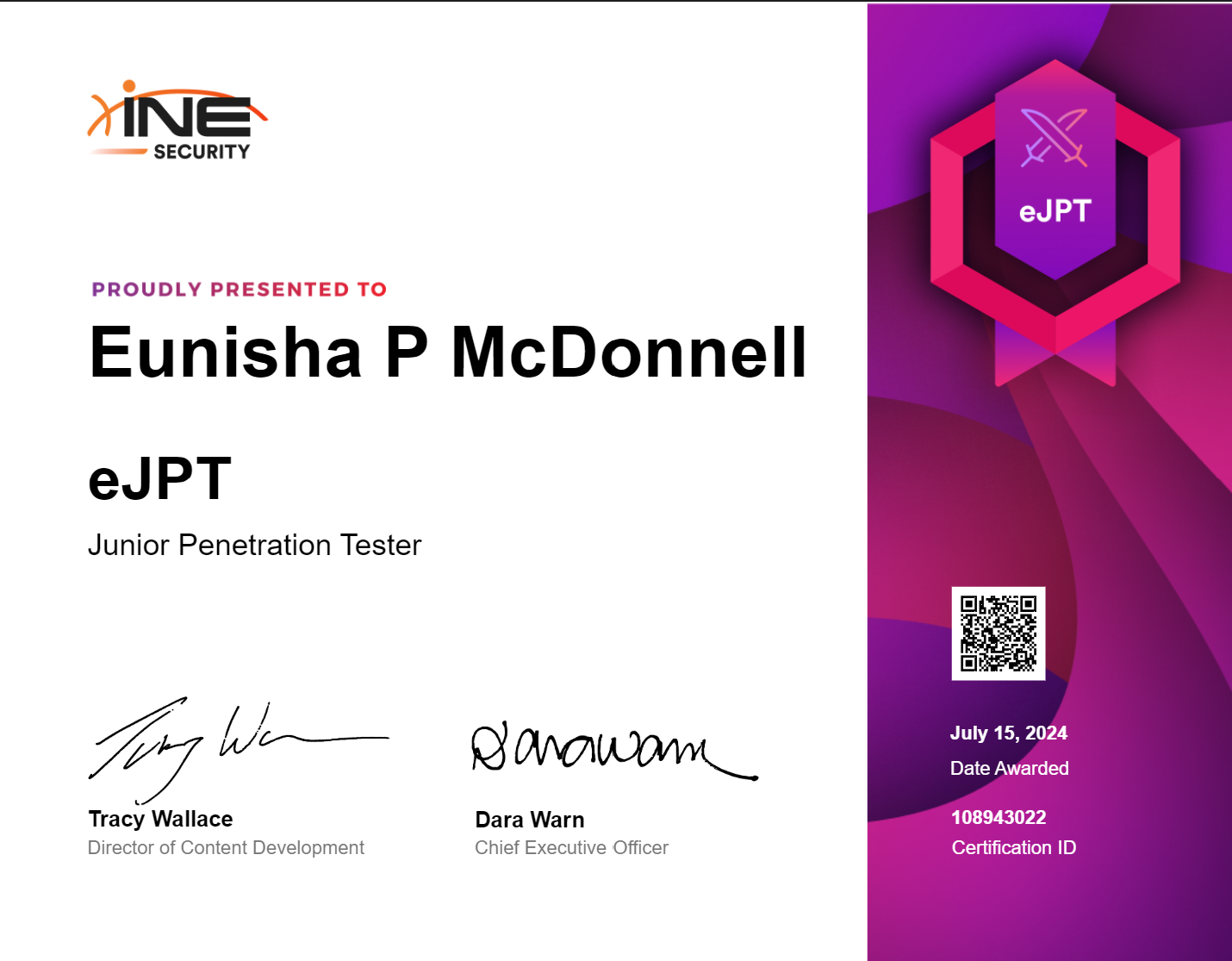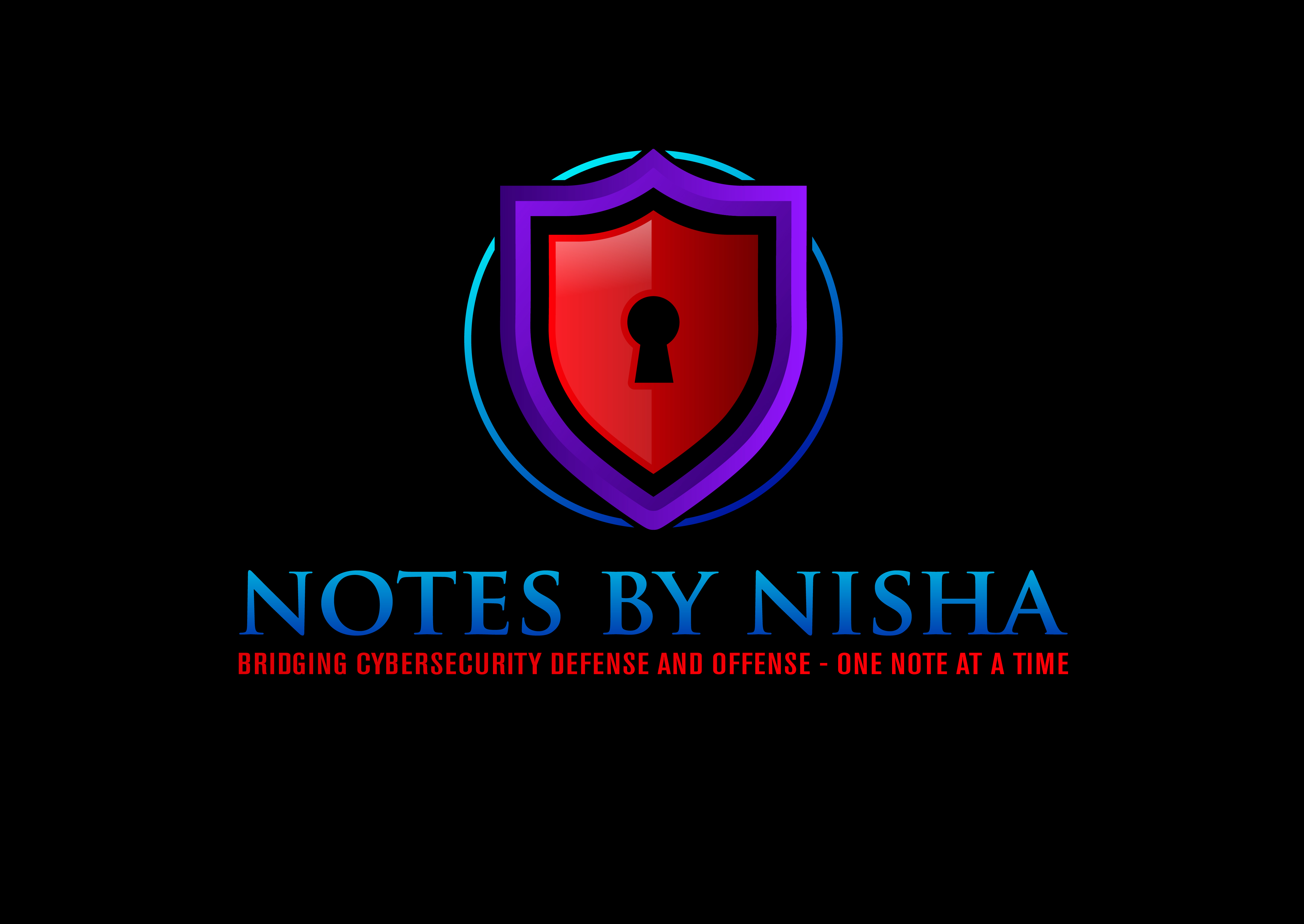My Journey to eJPT Certification: Insights and Tips for Success
Earning the INE Security Junior Penetration Tester (eJPT) certification has been a significant milestone in my cybersecurity journey. In this blog post, I’ll share my experience with the eJPT exam and the strategies that helped me succeed. Whether you’re considering this certification or preparing for the exam, I hope my insights will be useful for your own path in ethical hacking and penetration testing.

Demystifying the eJPT: An Overview of the Certification
The INE Security Junior Penetration Tester (eJPT) certification is an entry-level credential for aspiring penetration testers and ethical hackers. It validates practical skills in information security, focusing on hands-on techniques and real-world scenarios. The eJPT is designed for those looking to enter the field of cybersecurity or enhance their existing IT skills with security expertise.
Key aspects of the eJPT certification include:
- Practical, hands-on exam format
- Focus on real-world penetration testing scenarios
- Coverage of essential tools and methodologies used in the industry
- No prerequisites, making it accessible to beginners
Inside the eJPT Exam: Structure, Format, and My Experience
The INE Security eJPT exam is designed to test practical skills in a hands-on environment. Here’s an overview of the exam structure:
- Format: The exam is entirely practical, conducted in a simulated network environment.
- Duration: Candidates have 48 hours to complete the exam.
- Access: The exam is conducted online and can be taken from anywhere with a stable internet connection.
- Objectives: The exam simulates a real-world penetration testing scenario where you’re required to perform various tasks such as information gathering, scanning, and exploitation.
- Scoring: The exam is scored based on successful completion of specific objectives and findings reported.
- Passing score: To pass the exam, candidates need to achieve a score of 70% or higher.
- Retake policy: One exam retake is provided as an option.
The exam environment provides all necessary tools and resources, eliminating the need for personal setup or software installation. This approach ensures a standardized testing experience for all candidates.
In my experience, I found the practical nature of the exam both enjoyable and beneficial. As someone who prefers hands-on learning, the exam’s structure served as an excellent assessment of my newly acquired skills. The practical challenges allowed me to apply what I had learned in a simulated real-world environment, which I found particularly satisfying.
During the exam, I used Microsoft OneNote to collect my notes as I discovered information within the exam lab environment. This organizational approach proved to be very effective:
- I created and labeled a tab for each target machine by IP address and hostname
- I documented pertinent information about each target as I progressed throughout the exam
- This method helped me keep track of my findings, making it easier to revisit information and plan my next steps
This approach not only helped me stay organized but also ensured I didn’t overlook any important details discovered during the exam process.
Mastering the Essentials: Key Topics Covered in the eJPT Exam
The INE Security eJPT exam covers a range of topics essential for entry-level penetration testing. Based on my experience, here are the key areas the exam focuses on:
- Host & Network Auditing
- Scanning
- Enumeration
- File transfers
- OSINT (Open-source intelligence)
- Information gathering
- Assessment Methodologies
- Host discovery
- Identifying open ports
- Identifying vulnerabilities on a target
- Host & Network Pentesting
- Brute forcing
- Hash cracking
- Exploitation
- Pivoting
- Conducting exploitation with Metasploit
- Web Application Pentesting
- Conducting web application reconnaissance
- Brute-forcing logins
- Directory busting
- Identifying vulnerabilities
The exam emphasizes practical application of these concepts rather than just theoretical knowledge. It tests your ability to use various tools and techniques to identify and exploit vulnerabilities in a simulated environment.
Preparation Toolkit: Resources and Strategies for eJPT Success
Preparing for the eJPT exam requires a combination of theoretical knowledge and practical skills. Here are some resources I found valuable during my preparation:
-
INE’s Penetration Testing Student course: This course, available through INE’s platform, was my primary resource for exam preparation. It covers all the necessary topics and provides hands-on labs to practice your skills. INE’s Penetration Testing Student course
- Practice Labs: Hands-on experience is essential for this exam. In addition to INE’s labs, I found the following TryHackMe rooms particularly helpful:
- Additional online resources:
-
eLearnSecurity subreddit: This community is a valuable resource for discussions, tips, and shared experiences related to eLearnSecurity certifications, including the eJPT.
- Syselement’s Notes
- Abhi’s eJPT Roadmap
- PakCyberbot’s eJPTv2 Notes
-
- Practice tools:
Familiarizing yourself with common penetration testing tools is important. Some key tools include:
- Nmap for network scanning
- Metasploit for exploitation
- Burp Suite for web application testing
Directory busting tools:
- Nikto
- Dirbuster
- Gobuster
Bruteforcing tool:
- Hydra for bruteforcing login passwords
- Knowledge of the Penetration Testing Methodology:
Understanding the structured approach to penetration testing is valuable. The key stages include:
- Information Gathering
- Scanning and Enumeration
- Vulnerability Assessment
- Exploitation
- Post-Exploitation
Being aware of which stage of the penetration testing process I was in helped me make decisions about next steps for my target. This awareness guided my choice of tools and techniques, ensuring a systematic approach to each scenario in the exam.
- Detailed Note-Taking:
Taking detailed notes with steps and screenshots as I progressed through the INE course was extremely valuable. This practice helped in several ways:
- It reinforced my learning by actively engaging with the material
- The notes served as a personal reference guide during exam preparation
- Screenshots helped me recall specific tool outputs and configurations
- Documenting steps allowed me to create my own procedures for common tasks
I recommend creating a structured note-taking system that works for you, whether it’s a digital notebook, a personal wiki, or even handwritten notes. The act of documenting your learning journey not only aids in retention but also provides a valuable resource for quick review before and during the exam.
Concluding Thoughts: The Impact of eJPT on My Cybersecurity Career
Earning the INE Security eJPT certification has been a rewarding experience that has enhanced my skills in ethical hacking. This journey provided valuable technical knowledge and improved my approach to systematic problem-solving in cybersecurity scenarios.
I’d like to express my gratitude to Black Girls Hack for providing this valuable opportunity. Their organization offers mentorship, training, and support to both aspiring cybersecurity professionals and those already working in the field. Their support in making cybersecurity education more accessible plays an important role in diversifying and strengthening the field.
Whether you’re looking to add new skills to your cybersecurity toolkit or focusing on ethical hacking, the eJPT certification offers a challenging yet achievable goal. Good luck on your own certification journey!



